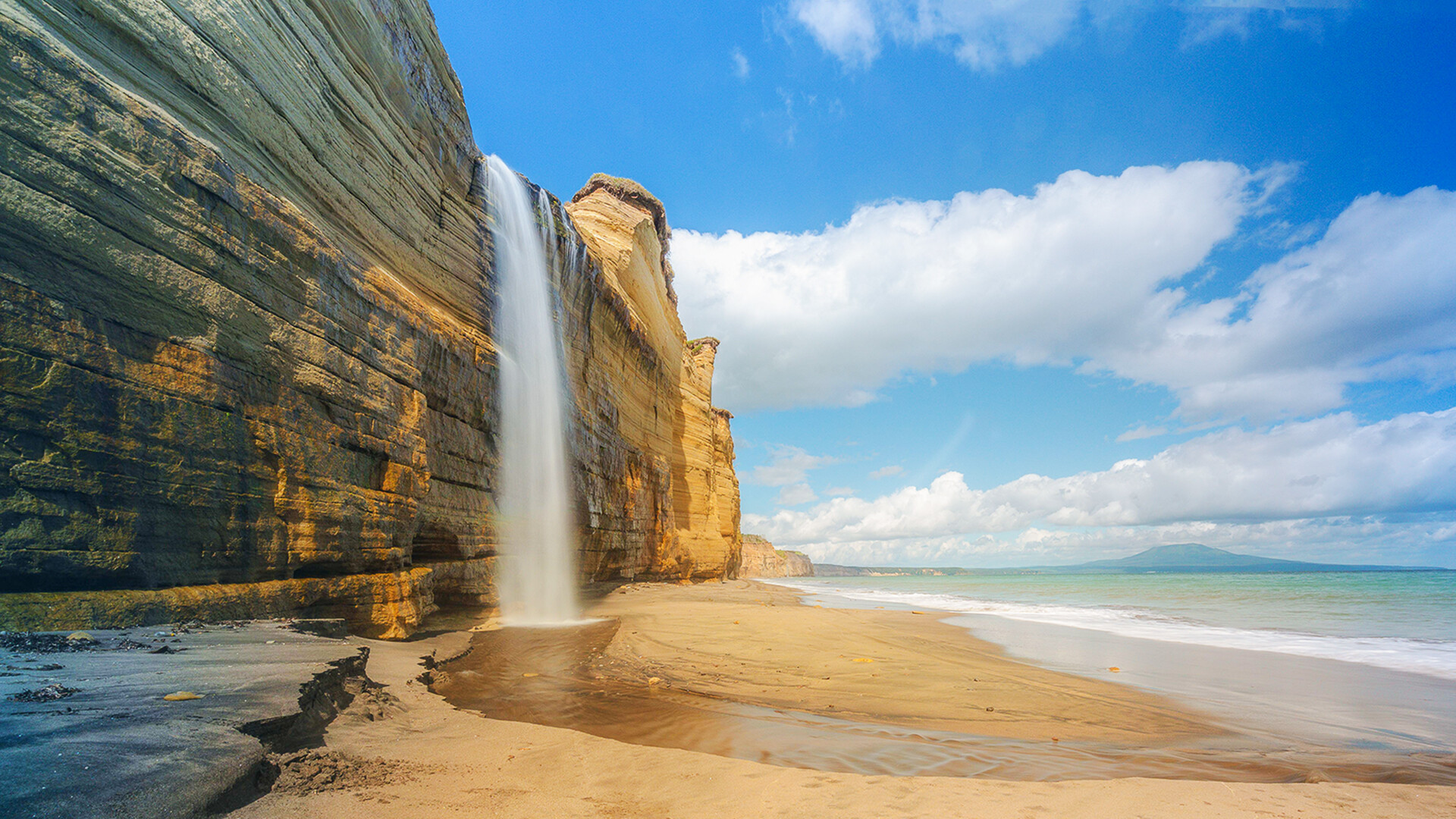
Waterfall on Golovinsky Cliff of Kunashir Island, Kuril Islands
Legion Media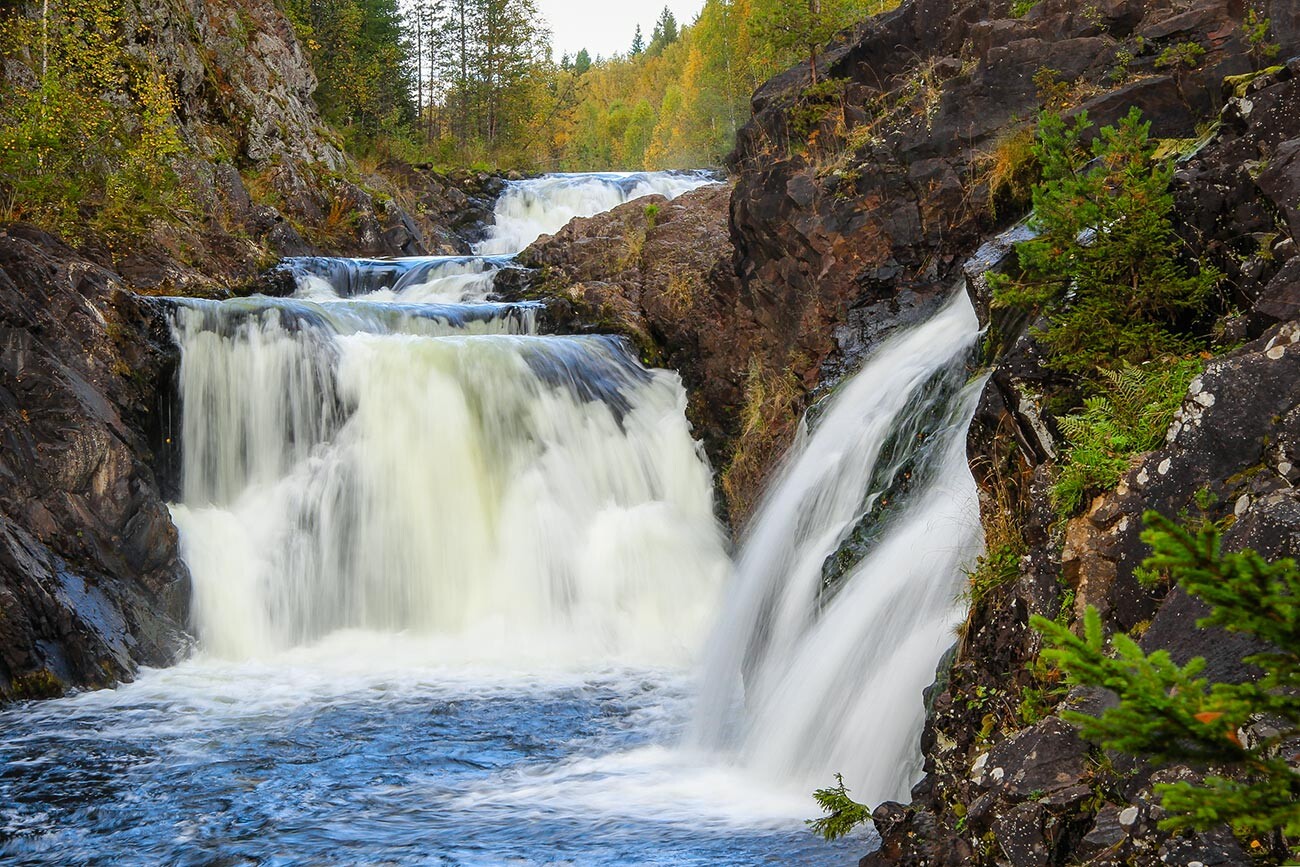
This waterfall on the River Suna - with a height of 10 meters - is the most famous in Karelia. It was even celebrated by renowned Russian poet of the 18th century Gavriil Derzhavin (in his ode ‘The Waterfall’, which opens with the line: “A mountain of diamonds pours down…”). Its name is believed to come from the Finnish word ‘kiivas’, which means “powerful, impetuous”.
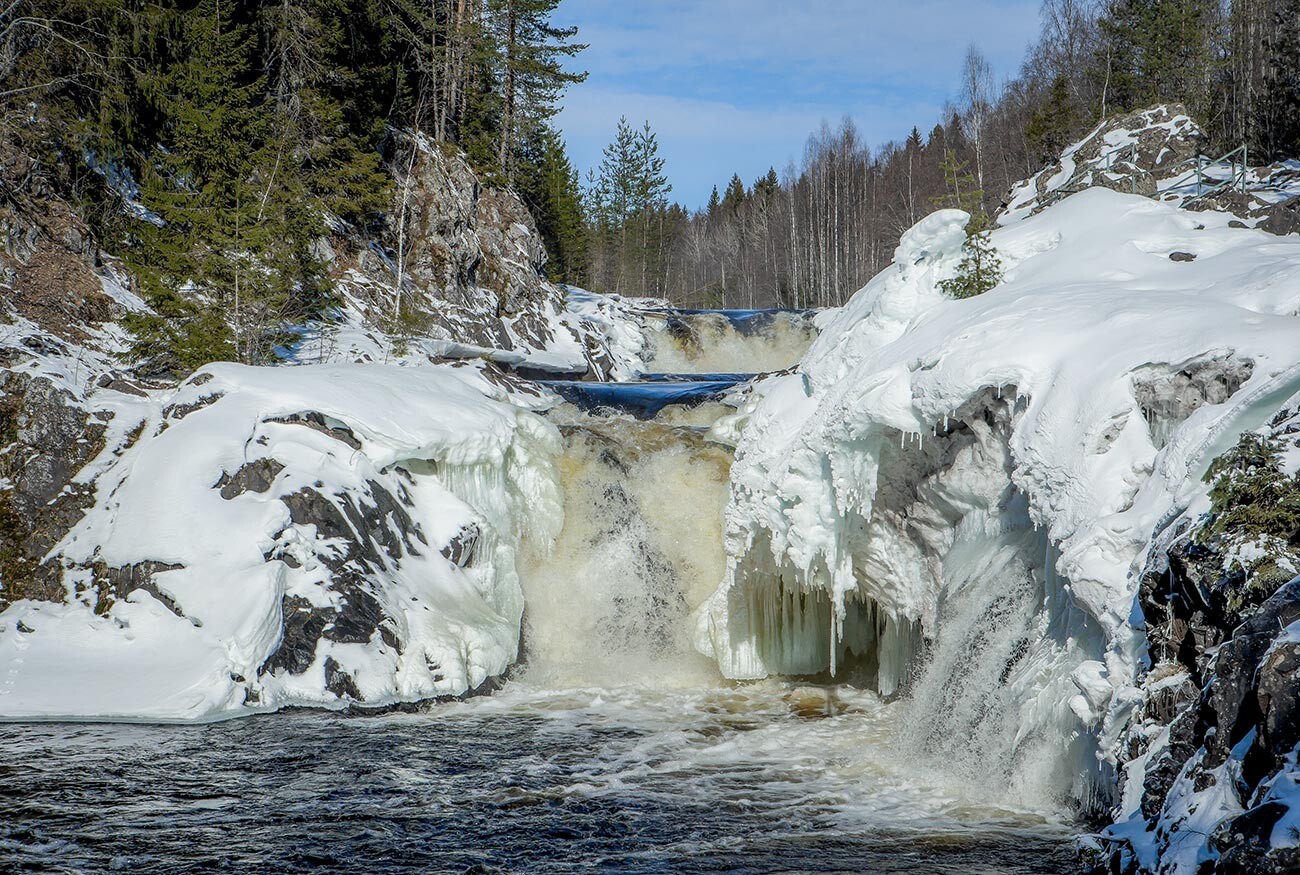
You can see how powerful the bifurcated flow of its turbulent water is even from a photograph. The waterfall doesn’t freeze in winter, picturesquely cascading past snow-covered rocks.
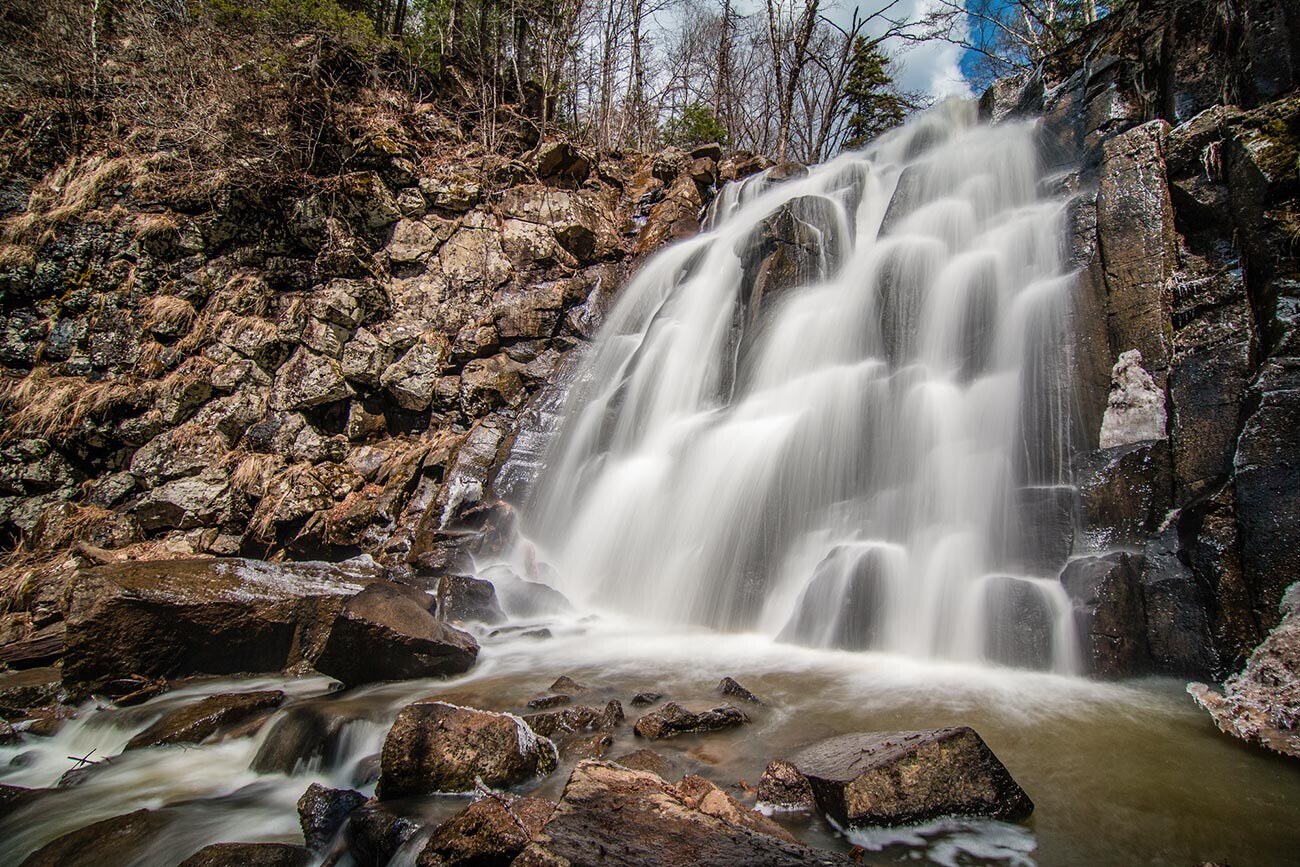
This waterfall (the name translates as “suddenly, unexpectedly”) on the Shkotovsky Plateau in the Sikhote-Alin mountain range is only about 13-15 meters high, but its flows of water adorn the stone cliff of the plateau so beautifully and sculpturally that it is regarded as one of the most spectacular in the Far East.

This waterfall, about 60 meters high, is situated in the valley of the River Gedmysh in the Republic of Kabardino-Balkaria. Owing to the fact that it divides into numerous streams, it is also dubbed ‘70 Streams’ or ‘Royal Crown’. It is fed by natural springs that emerge from the ground higher up in the mountains.

As many as three waterfalls, ranging from 25 to 60 meters in height, descend into the River Chegem in the Chegem Gorge in the Caucasus. They are one of the landmarks of Kabardino-Balkaria. This wonder of nature has villages, a road and even a hotel nearby, so the place is always teeming with tourists.

The Big Chulchinsky (Bolshoi Chulchinsky) waterfall, also known as the Uchar waterfall, is considered to be one of the youngest in the Altai Mountains. It is believed to have been formed about 200 years ago as a result of an earthquake. It was discovered only recently, in the 1970s, during an era when sporting and mountaineering tourism enjoyed great popularity in the USSR. The very powerful streams of water of the 160-meter-high waterfall on the River Chulcha cascade onto a mass of large boulders. Translated from the dialects of the Altai language, the waterfall’s name means “flying” or “impregnable”.
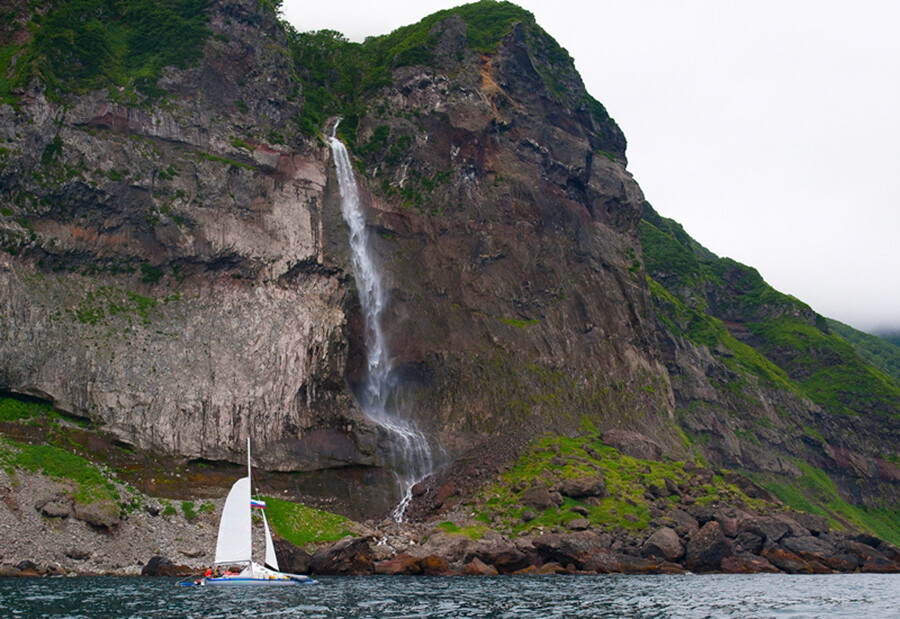
The waterfall named after a bogatyr(heroic warrior) of folklore is located on the Kuril Island of Iturup. Its height reaches 141 meters and it flows from the Demon volcano directly into the sea. It is extremely difficult to reach the waterfall and it can be viewed only from the open water. Scientists say that gray whales come to where it empties into the sea to clean themselves of clinging crustaceans in its fresh waters.
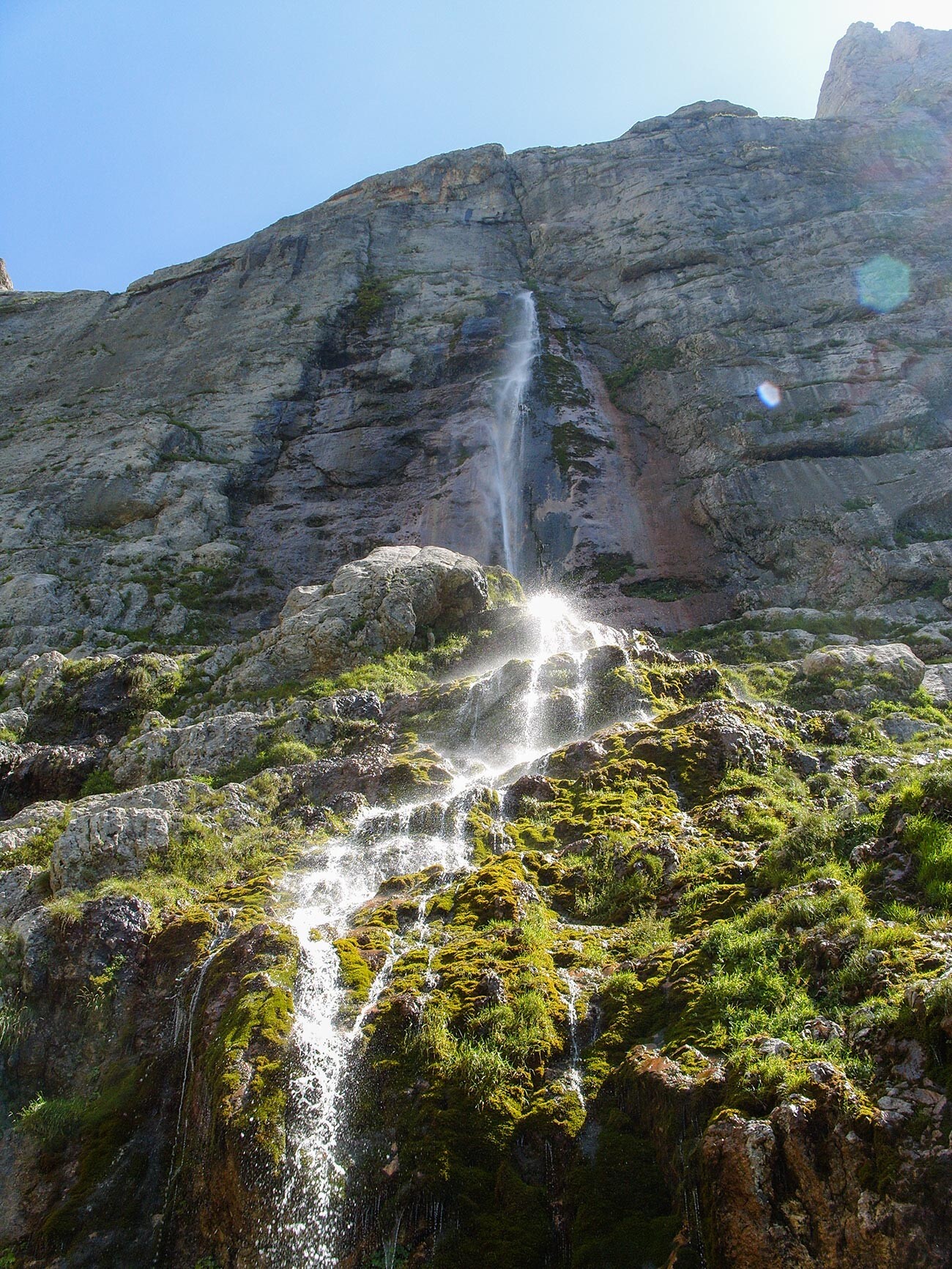
The Fishtinsky, or Pshekhsky, waterfall is fed by a mountain glacier and originates in a ravine between two Caucasus peaks - mounts Fisht and Pshekha-Su (which is why it has two interchangeable names). The waterfall is located in the Republic of Adygea and consists of three main flows of water. The first comes down from a height of roughly 190 meters, while the other two from around 160 meters. The waterfall flows particularly copiously in the spring, when the glacier melts, and then, in summer, it almost completely dries up, leaving a small rivulet that brave tourists actually dare to stand under at their own risk.

This waterfall is situated literally in the middle of Siberia, on the border between Krasnoyarsk Territory and Irkutsk Region. This ill-accessible high-altitude location in the Eastern Sayan Mountains is known as ‘Tofalaria’. Water from the Kinzelyuk mountain lake falls in a cascade into the River Kinzelyuk. The name translates from the Khakas language as “highly-valued”. The waterfall’s height is 328 meters, while the free fall section is around 90 meters. A group of scientists and enthusiasts only managed to carry out the first study of the waterfall and conducted measurements in 1989.
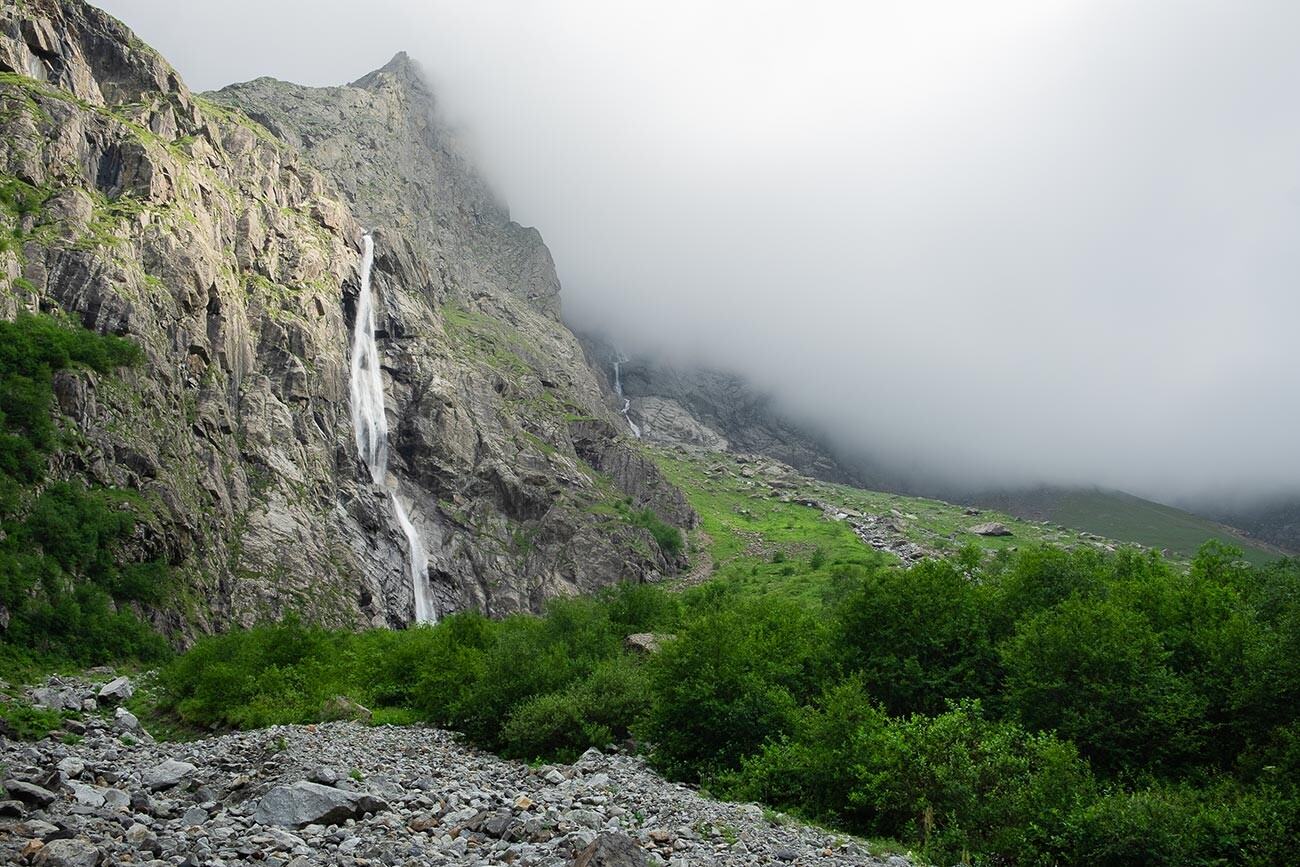
This waterfall in the mountains of the republic of North Ossetia is also known as ‘Bolshoi Zeygalansky’ (“Great Zeygalan”). Translated from Ossetian, its name means “place of the falling avalanche”. According to the latest measurements, conducted in 2016, the waterfall is 648 meters high and it is regarded as the highest waterfall in Europe (and Russia’s second highest). The water cascades most abundantly in July and August when the mountain glacier that feeds it melts. In winter, the water freezes and the mountain ravines are draped with a branching network of icy streams like a picturesque spider’s web.
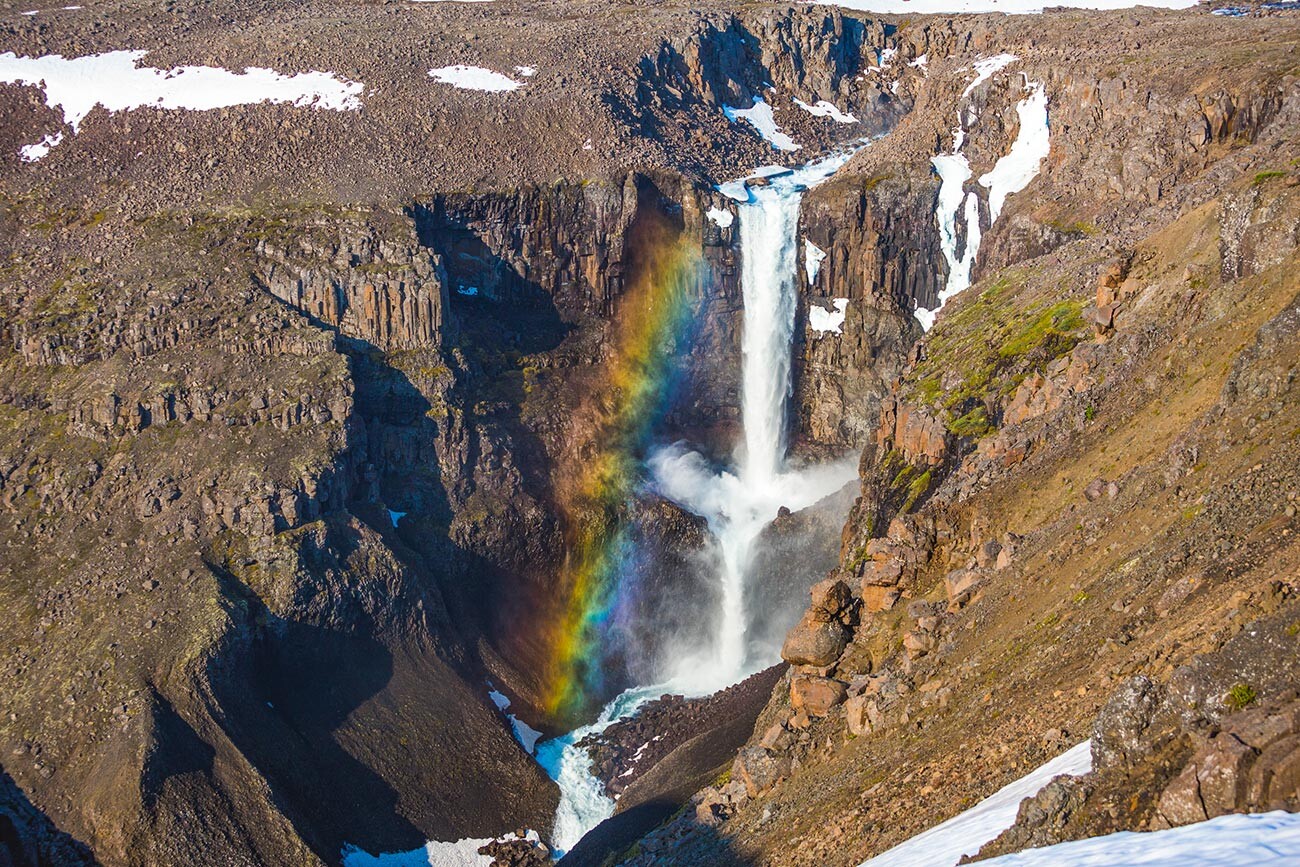
One of the most inaccessible locations in Russia, the Putorana Plateau has the biggest amount of waterfalls in Russia. They are extremely poorly studied, because not many scientists or tourists manage to reach it. There are full-flowing torrents and thin, but very high, streams flowing down the canyons. The Talnikovy Waterfall, the highest waterfall in Russia (and possibly the whole of Asia) is hidden away in the middle of the Putorana Plateau. This wonder of nature was only discovered in the 1970s by explorer Mikhail Afanasyev. According to different calculations, its height is between 480 and 700 meters (By comparison, the highest waterfall in the world, the Angel Falls in Venezuela, reaches around 1,000 meters in height). It has seasonal character: It is only “active” for a couple of months in spring and early summer, when the snow in the plateau melts, after which it runs dry.
Dear readers,
Our website and social media accounts are under threat of being restricted or banned, due to the current circumstances. So, to keep up with our latest content, simply do the following:
If using any of Russia Beyond's content, partly or in full, always provide an active hyperlink to the original material.
Subscribe
to our newsletter!
Get the week's best stories straight to your inbox